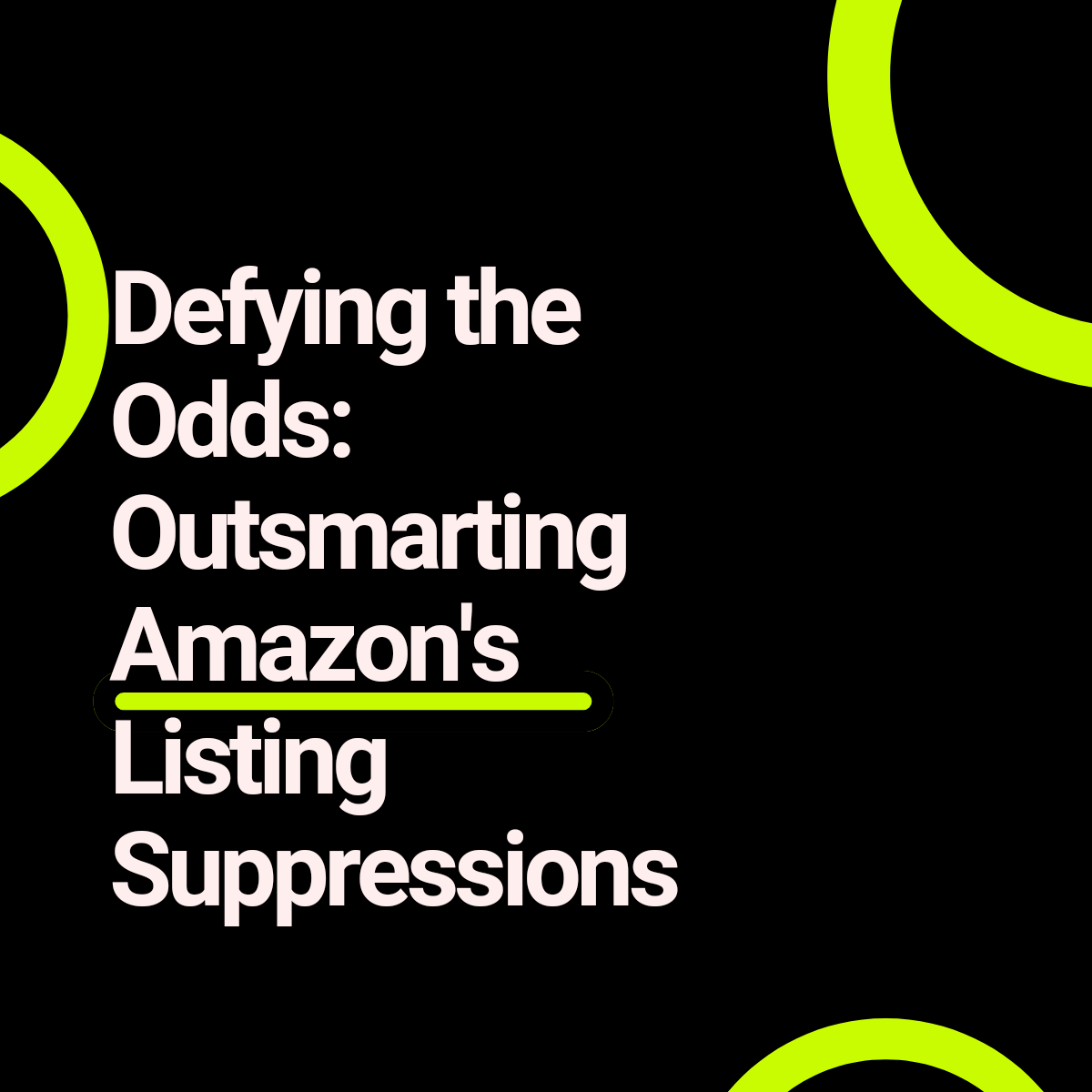Amazon stands as a behemoth, offering unparalleled opportunities for sellers to reach a global audience. However, navigating the complexities of Amazon’s marketplace comes with its fair share of challenges, one of the most formidable being listing suppressions. These suppressions can hinder product visibility and impede sales, posing significant hurdles for sellers.
I. Understanding Amazon Listing Suppressions
A. What are Listing Suppressions?
Amazon listing suppressions occur when a product listing is removed or restricted from appearing in search results or browsing categories on the platform. These suppressions can stem from various factors, including policy violations, inaccurate product information, or algorithmic issues.
B. Types of Listing Suppressions
Amazon categorizes listing suppressions into several types, each with its own set of implications for sellers:
1. ASIN Suppressions
ASIN (Amazon Standard Identification Number) suppressions occur when a specific product listing is removed or restricted.
2. Brand Suppressions
Brand suppressions affect all listings associated with a particular brand, resulting in a broader impact on a seller’s catalog.
3. Category Suppressions
Category suppressions occur when an entire category of products is restricted from appearing in search results or browsing categories.
C. Common Causes of Listing Suppressions
1. Policy Violations
- Restricted Products: Selling products that violate Amazon’s policies or guidelines.
- Misleading Information: Providing inaccurate or misleading product information.
2. Quality Issues
- Poor Product Content: Incomplete or low-quality product descriptions, images, or titles.
- Violations of Amazon’s Product Detail Page Rules: Failure to adhere to Amazon’s guidelines for product listings.
3. Algorithmic Changes
- Amazon Algorithm Updates: Changes in Amazon’s algorithm that impact product visibility.
- Competitive Factors: Increased competition or changes in market dynamics.
II. Strategies to Outsmart Amazon Listing Suppressions
A. Optimizing Product Listings
1. High-Quality Product Content
- Detailed Descriptions: Provide comprehensive and accurate product descriptions.
- High-Resolution Images: Use high-quality images that showcase the product from multiple angles.
2. Keyword Optimization
- Relevant Keywords: Incorporate relevant keywords in product titles, bullet points, and descriptions.
- Backend Keywords: Utilize backend search terms to improve discoverability.
B. Ensuring Policy Compliance
1. Adhering to Amazon’s Policies
- Policy Review: Regularly review Amazon’s policies and guidelines to ensure compliance.
- Monitoring Changes: Stay informed about policy updates and adapt strategies accordingly.
2. Addressing Quality Issues
- Content Audit: Conduct periodic audits of product listings to identify and address quality issues.
- Feedback Analysis: Pay attention to customer feedback and make necessary improvements.
C. Monitoring Performance Metrics
1. Performance Tracking
- Sales Metrics: Monitor sales performance to identify any sudden drops or fluctuations.
- Listing Health Dashboard: Utilize Amazon’s Listing Health Dashboard to track listing performance and health.
2. Competitive Analysis
- Competitor Research: Analyze competitors’ listings and strategies to identify areas for improvement.
- Benchmarking: Set benchmarks based on industry standards and strive to surpass them.
III. Resolving Listing Suppressions
A. Appealing Suppressions
1. Root Cause Analysis
- Identifying the Cause: Determine the underlying reason for the suppression.
- Documentation: Gather evidence to support your appeal, such as updated product information or policy compliance documentation.
2. Submitting Appeals
- Clear Communication: Clearly articulate the steps taken to address the issue and request a reinstatement of the listing.
- Follow-Up: Follow up with Amazon Seller Support to ensure timely resolution of the appeal.
B. Preventing Future Suppressions
1. Proactive Measures
- Continuous Improvement: Implement ongoing quality control measures to maintain listing health.
- Stay Informed: Stay abreast of industry trends and updates to anticipate and mitigate potential issues.
2. Automation and Tools
- Utilize Automation: Leverage automation tools to streamline listing management and identify issues proactively.
- Listing Optimization Tools: Invest in tools that assist in optimizing product listings and ensuring compliance.
IV. Conclusion
Navigating Amazon listing suppressions requires a combination of vigilance, adherence to policies, and strategic optimization. By understanding the underlying causes, implementing proactive measures, and leveraging data-driven insights, sellers can not only mitigate the impact of suppressions but also thrive in the competitive landscape of e-commerce. As sellers continue to defy the odds and outsmart listing suppressions, they pave the way for sustained success and growth on the Amazon marketplace.

